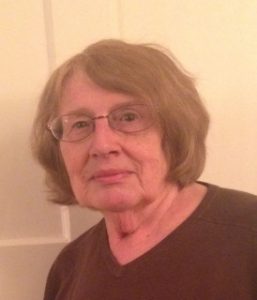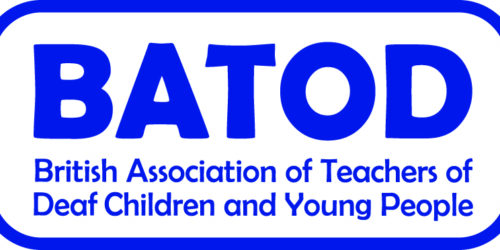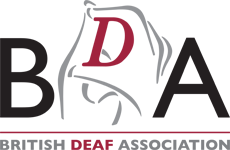Schools for the deaf
by Susan Gregory

Schools for the deaf, at one time the major force in the education of deaf children and a cornerstone of the deaf community, have reduced significantly in number during the period 1960-2010. For many reasons it is difficult to get clear figures to illustrate this because of the different age ranges covered by different schools, and the different parts of the UK included. As an approximate guide, however, it seems that there were 75 schools for the deaf in the UK in 1982 (Moore 2008), and this had declined to 23 in 2010 (CRIDE report 2011). In the schools that remain, many have seen a decline in pupil numbers. This is illustrated in figures for the number of pupils in different years at the Northern Counties School in Newcastle:
Year 1960 1970 1980 1988 2013
Number of pupils 206 197 143 93 64
Herdman (1988)
There are many reasons for the decline in the number of schools and of pupil numbers in schools. A major factor has been a general trend within society as a whole to recognise the rights of disabled people and to improve the integration of disabled people in mainstream society. Discussions concerning the rights of this group came to the fore in the 1960s and in 1971 the Association of Disabled People was formed in the UK. The major legislation in this area has been the Disability Discrimination Act of 1995, which was extended in the Amended Act in 2005.
This development was also apparent in education where the education for pupils with special educational needs underwent a major review in the 1970s. In 1978 the Warnock report was published, the findings of which were set out in the 1981 Education Act which was enacted in 1983. The Warnock report recommended that all pupils with special educational needs should, as far as possible, be educated in mainstream schools. As a consequence of this, increasing numbers of deaf pupils attended mainstream rather than special schools, either in units, resourced schools or individually in their local school. The move to mainstream for deaf pupils had, in fact, started earlier, before the Warnock committee reported, with the development of Partially Deaf (later Hearing) Units in the 1960s (see website section on ‘The education of deaf pupils in mainstream schools’ where these issues are discussed in more detail). However, the legislation gave further impetus to this development.
A further factor influencing this change was the developing disquiet about the attainments of deaf pupils in the 1960s and 1970s. A committee had been formed under the chairmanship of Professor Lewis to look at ‘The education of deaf children’. Although its specific focus was to be on the ‘possible place of fingerspelling and signing’, nevertheless, underlying this was concern about attainments of deaf pupils. Early in the report it said:
‘Disquiet about the results of the education of deaf children has been expressed many times by workers among the adult deaf who are conscious of the speech and language deficiencies of members of the deaf community who seek their help, and of the inadequate educational attainments of many school leavers coming into their care which impoverish the quality of the social, recreational and working lives of these young people.’ (p12)
More systematic evidence for poor attainments was produced by Conrad, who studied the language and cognition of deaf pupils looking at 15-16½ year olds leaving school in the period 1974-76. His research findings showed that the median reading age of these pupils leaving school was nine years, suggesting that half of them were functionally illiterate. Also the lip-reading skills of these pupils were no better than that of hearing pupils of the same age who had not spent years being trained in this skill. (Conrad 1979)
These findings contributed to the general view that there was a need for change, Units were becoming more and more popular and within deaf education there was a move to fuller integration/inclusion. Part of the problem was seen to have been the isolation of schools for the deaf from the main education community and education in mainstream seemed to provide an answer to this.
However, there was significant resistance to the closure of special schools in the period following the Warnock report, particularly from the Deaf Community who in some instances saw this as an attack on their language, culture and community. In order to appreciate some of the reasons for the strength of feelings it is necessary to go back before 1960 to the heyday of schools for the deaf in the 1930s and 40s.
Schools for the deaf have a long history in the UK. The first school for the deaf was the Royal School for Deaf children which was founded in 1792 and known as the Asylum for the Deaf and Dumb children of the poor. It was the only third free school for deaf children in the world. However, the peak period for schools for the deaf was the 1930-40s. Taking into account the UK and also the Republic of Ireland, in 1933-34 there was a total of 81 schools for deaf pupils. This comprised 31 residential schools, 41 day schools, and 9 private schools (Lee 2004). The dominance of schools for the deaf was not only in the number of schools but in the large number of pupils in many of the schools, the largest residential school being The Royal School for the Deaf, Margate with 401 pupils, and the largest day school being the Liverpool School for the Deaf with 200 pupils The official policy at this time was oralism with signing effectively banned from the classroom, although the informal communication of the school was sign language.
Schools for the deaf had a major significance until the 1970s. An indication of this is the fact that ‘School News’ which were reports from individual schools for the deaf, were a regular part of the ‘The Teacher of the Deaf’ until July 1975. This was the main journal for Teachers of the Deaf at that time. These reports covered such areas as new staff, sporting events; Duke of Edinburgh Award projects, Arts Festivals and many more.
The significance of the schools for the deaf was not only educational but also their role in the deaf community. Together with the Deaf Club, the school for the deaf provided a centre for the deaf community, and also a place where sign language could be developed. As Paddy Ladd points out ‘the first Deaf cultural site which represents the tradition we know today is the deaf residential school experience….deaf schools – the domain where the community language was learned, overtly at first and covertly after Oralism; where manifold aspects of socialisation into the Deaf experience occurred’.
Some have questioned the whole notion of inclusion applied to deaf children as meaning education in mainstream schools. Surely if inclusion is to mean anything it means full participation in the education process which suggests the need for easy communication. For many deaf children this cannot be achieved in a classroom where everyone else is hearing, and is more easily achieved when deaf children are educated with other deaf children. Some have suggested that it may not be just the community of pupils that is important, but the community of teachers. How much harder it must be where pupils are individually included, as the Teacher of the Deaf must cover a number of schools and visit only occasionally. Who is monitoring the progress of the pupil or the efficacy of the equipment, the visiting Teacher of the Deaf, the class teacher, or the head of the mainstream school? (Ladd 1981)
An organisation within the United Nations has made a special case for some groups of children needing to be educated in special schools. The Salamanca (UNESCO) statement of 1994 states ‘Owing to the particular communication needs of deaf and deaf/blind persons, their education may be more suitably provided in special schools or special classes and units in mainstream schools’.
The resistance to inclusion for everyone has not only come from within deafness, but from groups speaking on behalf of other disabled children for whom it was not always seen as the best way of providing education. In 2005, Baroness Warnock published an article in which she discussed some of her reservations about the various education acts dealing with inclusion and their manifestations. A summary of this can be found on the BATOD website by following Resources >> Inclusion.
In 2010 she explained on her views in an article entitled ‘The cynical betrayal of my special needs children’ and argues that her report had been misunderstood. The report had suggested that defining educational special needs would mean that this would enable more children to be taught in mainstream rather than special school because provision for their needs would now be better, and they would become part of recognised mainstream provision. But the committee as a whole never proposed that all children should be taught under the same roof or that special schools should be abolished. Nevertheless, it seems that mainstream education has become, and is likely to remain, the dominant provision for pupils including deaf pupils with special educational needs. As the number of schools for the deaf declined, certain changes came about. With fewer schools for the deaf, those that remained were drawing pupils from a larger catchment area. Placement in a school for the deaf for those wanting it could not be taken for granted. The decline in number of schools for the deaf meant that for many deaf children it was no longer an option unless their local authority would pay the fees required to send a child out of county for their education. Considering the demands on local authority budgets it was a decision that had to be made very carefully.
Schools for the deaf have responded in many different ways to the changing circumstances, many in terms of meeting particular special educational needs. Firstly the population of most of these schools changed as many more children with complex needs in addition to their deafness were admitted. This was probably due in part at least to the fact that many more premature babies and babies with disabilities were surviving due to advances in medical care. Many schools adapted to include deaf children with complex needs.
Secondly, while some special schools maintained their oral policy during the second half of the twentieth century, many others introduced some form of signing, either total communication meaning that signs were used in conjunction with speech, or sign bilingual policies where both English and BSL were used. There were a number of reasons why this development came about which will be discussed in the section of this website on ‘Sign language and the education of deaf pupils’.
At the time of writing the future of special schools for the deaf is uncertain. While some are well established and seem well placed to face future challenges, others are under threat. It is likely that the future will be as dependent on changes or developments in the wider society as on the views of deaf people or professionals working in this area. Changes in the organisation of the education system as a whole or advances in the technology that make sound more accessible for many deaf pupils may well be such influences.
A list of current special schools for deaf children in the UK can be found here.






